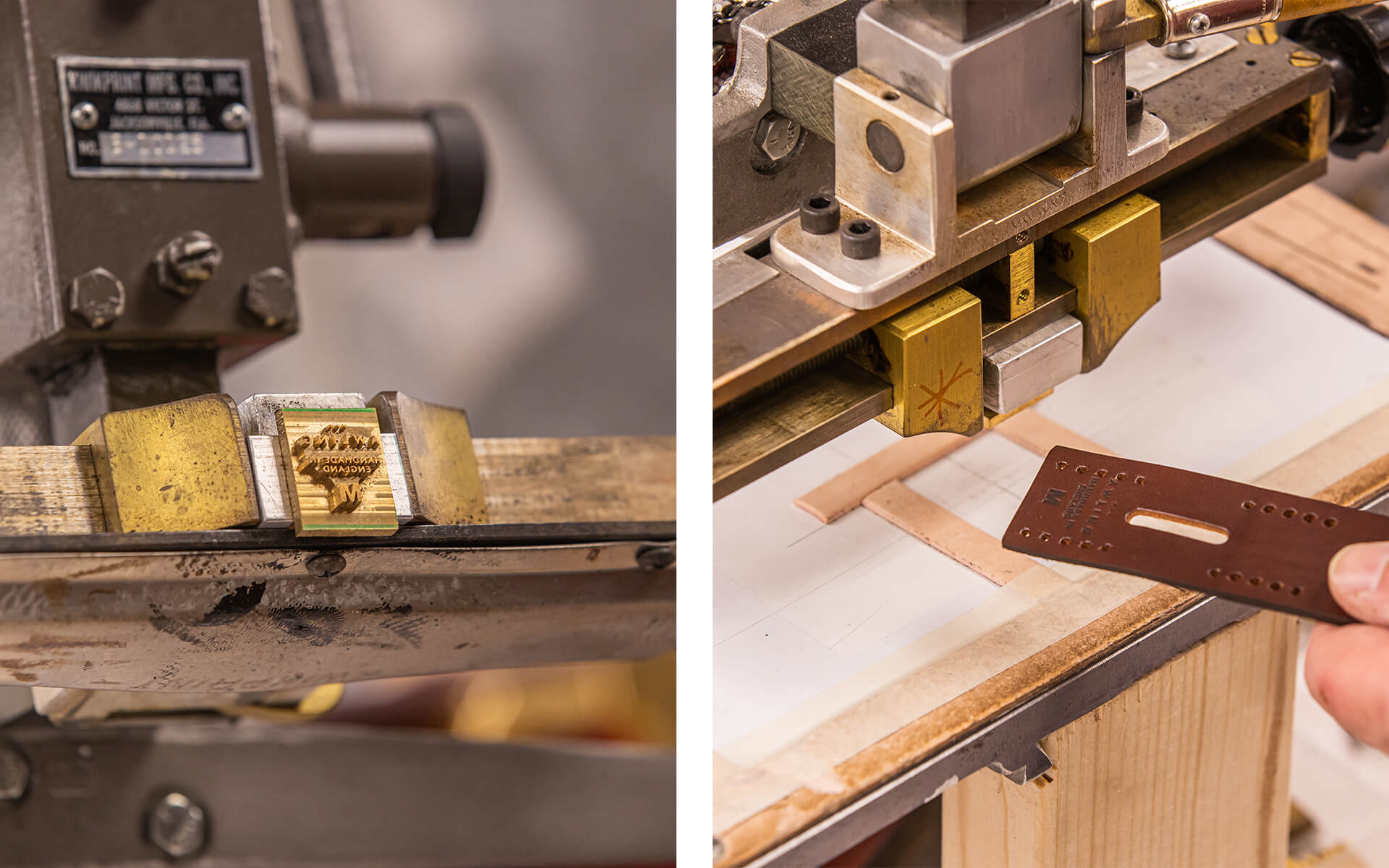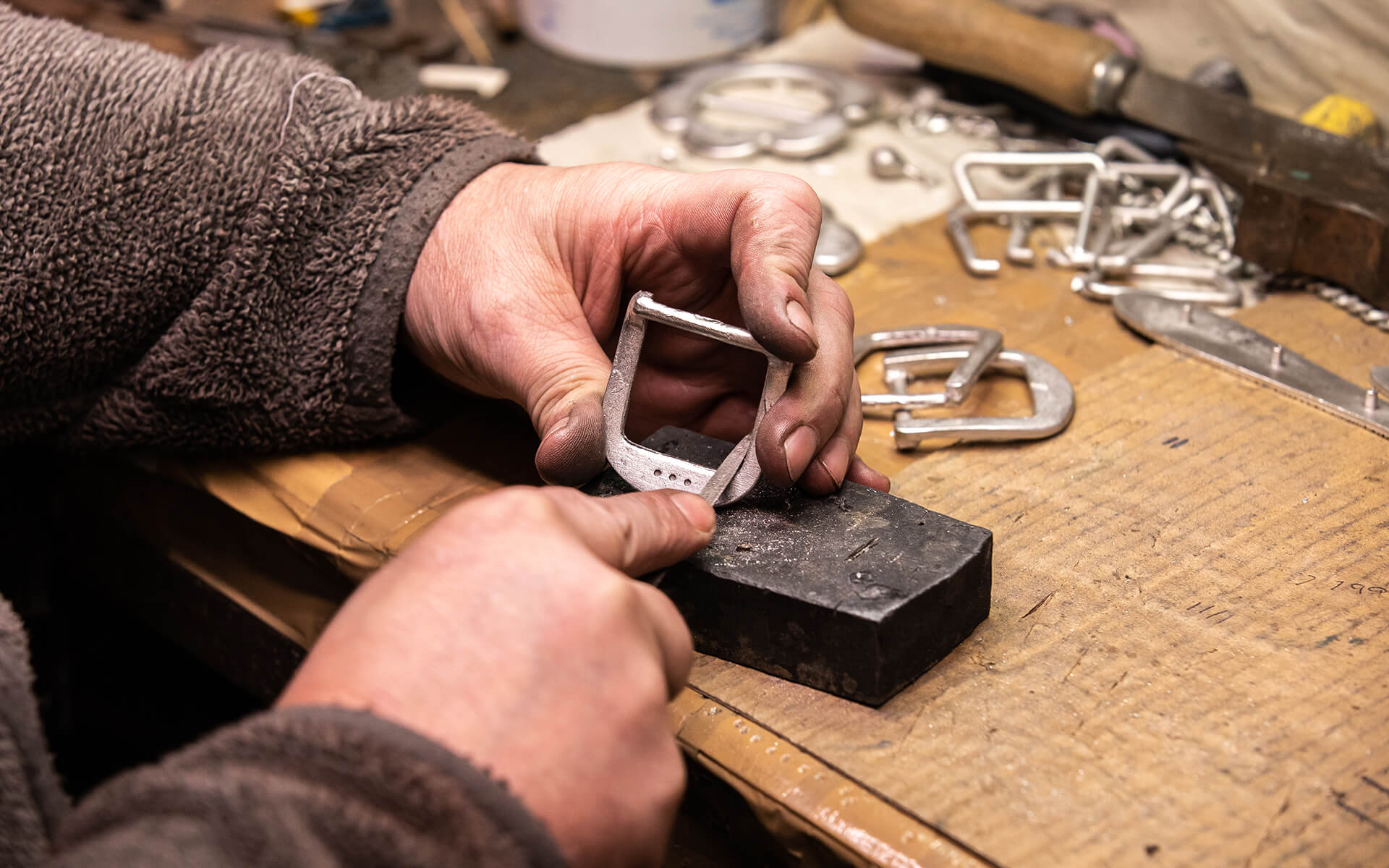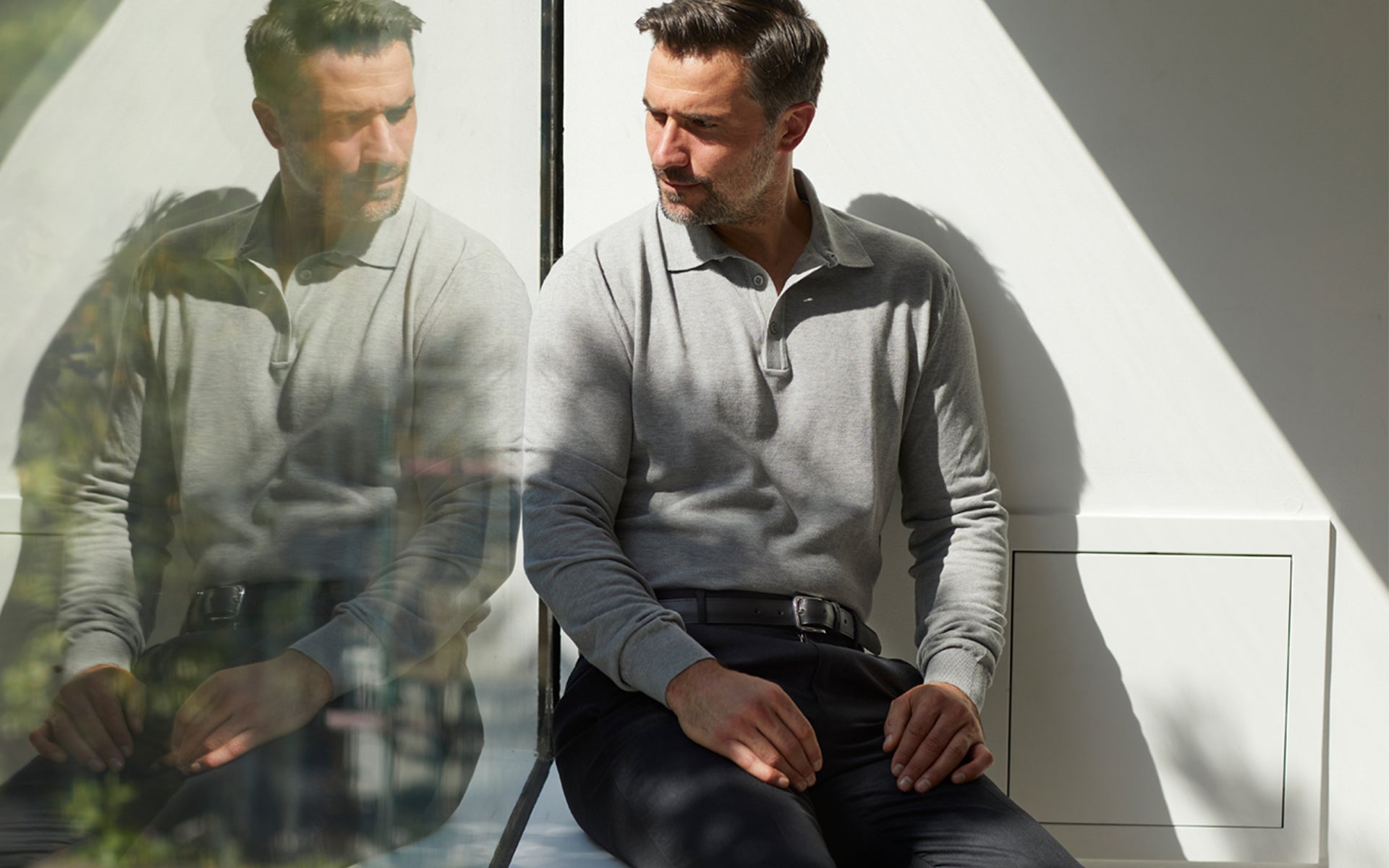Over the last couple of months on the Journal, we’ve gone into detail about our vegetable tanned Tuscan leather and how our buckles are made. We’ve done this in the bid to help you further understand and appreciate the level of quality that we’re committed to upholding here at Awling, which is an uncompromising pursuit of excellence.
This month, we’re focusing on the final part of the overall process, which is when the two main elements – the leather and buckle – come together in harmony in our workshop in Mowbray, Leicestershire, and eventually produce a belt that’s diligently Made in England.
In the leather room in our humble workshop in Mowbray, shelves that reach the ceiling are stacked with a wide-range of premium quality hides in an array of colours. Despite the range that’s on offer, though, here at Awling we prefer the more classic styles, such as black, brown, tan and those charming ones in between and so we only work with a small proportion of what can be found in the leather room.

Depending on the belt we’re intending to create, our craftspeople will pull from the shelves a large skin of vegetable tanned leather before then laying it down flat and examining it with their eyes and hands. It’s a crucial step, as we want to avoid using sections of leather that display signs of growth, such as stretch marks, and also scars, which can occur when the cow comes into contact with something sharp like a fence. As a result, we mark the areas with chalk and work around them.
Once those areas have been noted, our craftsman will begin his ritual of sharpening his bespoke knife using a machine wheel and sharpening block. Again, this is a crucial step that must take place and done properly, too, as it will allow him to glide through the leather like a hot knife through butter. To make the process more managable, strips of leather are cut from the large hide using a ruler before then being widdled down to the precise width and length with the help of a guide that’s attached to the leather. Once completed, it’s at this point that we have something that vaguely resembles a belt, but there’s still more to do.
Seamless aesthetics are of great importance to us at Awling. As a result, we make sure that all areas of the belt are consistent in quality and character. One example of this is how we hand burnish the entire edges of the leather using wax which creates a protective seal on the exposed areas. Not only that, but the seal also mimics the naturally waxy texture of the leather, which is generated via the vegetable tanning process carried out by Lo Stivale in Florence, Italy.

After the holes have been carefully punched through the leather, we’re at the stage in which we can quite literally make our mark on the belt. We do this by debossing our logo with heat and pressure onto the tip of the belt that’s folded over the centre piece of the buckle, which we have made bespoke for us in Cheshire, England. (It’s not on the front of the belt for the world to see, but the underside of it as we prefer an understated look.)
To attach the buckle to the leather, we use use an incredibly strong and durable thread. When it comes to the overall design process, the thread comes in handy as depending on the colour it can be used to inject a subtle bit of accenting. For instance, our Pavilion belt in walnut brown leather which features an orange-like gold thread which stands out. On the other hand, our Original belt in tan features a tan thread which gives it a tonal and sleek look. Prior to being attached to the belt, the thread is passed over a wax block before then being stitched by hand through the holes by many, many times. It’s then finished with a concealed knot that helps ensure that the buckle will never come loose from the leather.

Like all great products that are designed and manufactured to be used often and for a long time, the final step is always quality control. We’re only as good as our word, and so when we say that we make the best belts in England we have to check every single component. From re-scanning the leather to examining the buckles, everything needs to be perfect and we give each belt and buckle a once over with a final polish.
This concludes our three-part exploration of how our belts are made, and if you have any questions or queries don’t hesitate to get in touch as we’d love to tell you more about it.
Shop our belts here.




Leave a comment
This site is protected by hCaptcha and the hCaptcha Privacy Policy and Terms of Service apply.